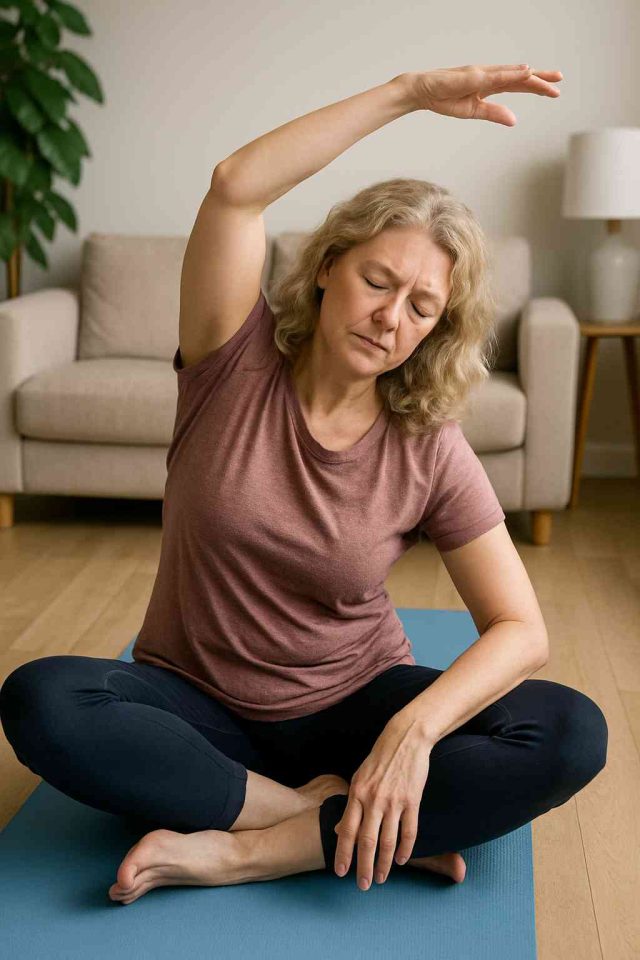Living with fibromyalgia can feel like navigating an unpredictable storm. Pain, fatigue, and stiffness often interfere with daily activities, leaving many women wondering if they can ever reclaim their strength. However, incorporating the right fibromyalgia exercises into a routine can significantly improve physical function and quality of life. But which exercises are most beneficial, and how can women tailor them to their unique needs?
Let’s explore the role of movement in managing fibromyalgia symptoms and empowering women to move with confidence and purpose.
Table of Contents
- Why Exercise Matters for Fibromyalgia
- Best Low-Impact Exercises for Fibromyalgia Relief
- Tailoring Your Routine: Tips for Women
- When to Seek Professional Help
- Conclusion
- FAQs
Why Exercise Matters for Fibromyalgia
Exercise is often misunderstood by those with fibromyalgia. While it may seem counterintuitive to move more when you’re in pain, regular physical activity can reduce symptoms over time. Studies show that gentle, consistent exercise helps ease stiffness, decrease fatigue, and elevate mood.
For women, who are more likely to be diagnosed with fibromyalgia, hormonal changes and daily stressors can further complicate symptoms. That’s why exercise is essential. It not only improves circulation and flexibility but also releases endorphins that combat pain naturally.
Walking, yoga, and swimming are particularly effective. However, starting slow and building tolerance is crucial to avoid flare-ups. By listening to your body and choosing the right movements, you can reduce discomfort rather than intensify it.
Best Low-Impact Exercises for Fibromyalgia Relief
Gentle, low-impact workouts are ideal for managing fibromyalgia symptoms. These exercises build strength, improve mobility, and relieve stress without overtaxing the body.
Walking and Aquatic Workouts
Walking is accessible and requires no equipment. It boosts cardiovascular health and gently works muscles. For extra joint relief, water aerobics or swimming provide full-body movement with minimal impact, making them excellent for fibromyalgia relief.
Stretching and Yoga
Stretching improves flexibility and reduces muscle tension. Women often find relief in beginner yoga classes, which combine movement and mindfulness. Styles such as Hatha or restorative yoga promote relaxation and are easy to modify.
Strength Training and Resistance Bands
Light strength training builds endurance and supports joints. Resistance bands are perfect tools—affordable, portable, and adaptable for different fitness levels. Aim for two sessions a week, focusing on core and postural muscles.
Tai Chi and Pilates
Tai Chi’s slow, flowing movements enhance balance and mental calm. Likewise, Pilates improves posture and core strength, both of which help alleviate fibromyalgia-related discomfort. Always consult a certified instructor to ensure movements are safe and effective.
Tailoring Your Routine: Tips for Women
Women living with fibromyalgia have different needs depending on age, fitness level, and severity of symptoms. A customized approach yields the best outcomes.
Start Slow and Monitor Progress
Begin with 5-10 minutes of activity and gradually increase duration. Keep a symptom journal to note what activities help or aggravate symptoms. This empowers you to adjust your routine effectively.
Prioritize Recovery
Rest days are not optional—they’re essential. Schedule breaks and use relaxation techniques such as meditation or warm baths to soothe your body. Avoid back-to-back high-effort days to prevent overexertion.
Choose the Right Environment
Warm environments help loosen stiff muscles. Consider heated pools or climate-controlled studios. Comfortable clothing and supportive footwear also make a big difference.
Mix It Up
Incorporate variety to prevent boredom and maintain motivation. Rotating between walking, yoga, and strength training keeps the routine fresh and targets different muscle groups.
When to Seek Professional Help
Sometimes, fibromyalgia symptoms interfere too much with everyday life to manage alone. In such cases, it’s best to consult a healthcare provider or physical therapist who understands chronic pain disorders.
A professional can design a program tailored to your abilities, helping avoid injuries and setbacks. Online resources like Healthcare.pro connect patients with licensed experts in chronic pain management. In addition, sites like HealingWell offer articles, community forums, and success stories.
If exercise triggers new pain, swelling, or excessive fatigue, pause your routine and seek guidance. With proper support, setbacks can be turned into stepping stones.
Conclusion
Fibromyalgia doesn’t have to control your life. Through regular, tailored fibromyalgia exercises, women can reclaim strength, reduce symptoms, and gain confidence. The journey requires patience and persistence, but the rewards—improved sleep, mood, and mobility—are worth the effort.
Movement becomes a tool for healing, not just surviving. With the right guidance and consistency, women living with fibromyalgia can thrive.
FAQs
What are the best exercises for fibromyalgia pain? Low-impact activities such as walking, swimming, yoga, and Tai Chi are effective in managing pain.
Can exercise make fibromyalgia worse? Overexertion can lead to flare-ups. Start slowly, pace yourself, and prioritize rest days to prevent worsening symptoms.
How often should I exercise with fibromyalgia? Aim for 3-5 days a week, incorporating a mix of cardio, strength, and flexibility exercises.
Is strength training safe for women with fibromyalgia? Yes, when done with light weights or resistance bands under guidance. It helps support joints and boosts energy levels.
Should I consult a doctor before starting? Absolutely. Always check with a healthcare provider before beginning any new exercise regimen, especially when managing chronic conditions.
Disclaimer
“This content is not medical advice. For any health issues, always consult a healthcare professional. In an emergency, call 911 or your local emergency services.”
